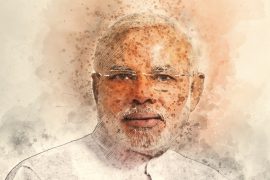Two years after the official renaming of Calcutta to Kolkata in 2001, the high court made a landmark ruling. It declared that the city had ancient origins that predated the arrival of the British, and the English East India Company’s administrator, Job Charnock, could not be recognised as its founder.
For centuries prior to this decision, it had been believed by many that it was Charnock who laid they city’s urban foundations in 1690. Along the banks of the Hooghly, he established a British trade settlement comprising the three large villages of Sutanuti, Gobindapur and Kalikata.
The ruling stripped the 18th century Englishman of his supposed credit and the city of its official birth date, but the idea of a colonial beginning remains entrenched in public consciousness.
With dozens of imposing colonial structures strewn across its span, one cannot help but think of the capital of West Bengal as the “Second City” of the British empire after London. It was, after all, the capital of British India until 1911. The architectural landscape of Kolkata also gave it one of its many monikers – the City of Palaces.
Copyright©Madras Courier, All Rights Reserved. You may share using our article tools. Please don't cut articles from madrascourier.com and redistribute by email, post to the web, mobile phone or social media.Please send in your feed back and comments to [email protected]











